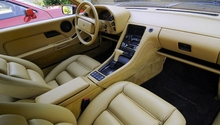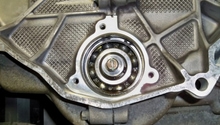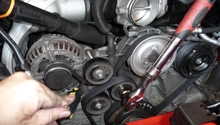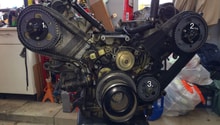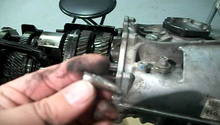Porsche 997: Why is My Car Making a Grinding Noise?
Metal on metal noises while your car is running come in all different kinds, many of which are usually quite costly. Here's a few possibilities for the car equivalent to nails on a chalkboard.
This article applies to the Porsche 911 997 (2005-2012).
There are certain noises that those of us who own a car never want to hear as they are sometimes the first indication that something has failed or is about to fail. They could also mean you're going to have to fork out some cash. As soon as you hear something even close to a metal on metal ticking, grinding, or rattling, it's recommended to start assessing different spots on the car to figure out where it might be coming from.
What is unfortunate is that if you hear it coming from where the engine is, the problem can be multiple things. Most modern engines have various components and accessories that are operating along with the engine. This makes figuring things out extremely difficult because you have to somehow determine and eliminate what is a regular operating noise so you can pinpoint what is irregular. To help get you started, here are some possibilities for grinding or rattling noises coming from a Porsche 997.
Materials Needed
- Mechanics stethoscope
- Long screwdriver
- Flashlight
Before starting to troubleshoot and pinpoint where the noise is coming from, remember that parts can fail differently every time and tend to make various noises each time. Also, if your car is making a noise and also causing a tremendous vibration, or the noise is progressively getting louder and louder, it is probably best to assume that something has gone very wrong and to consult with someone who can better diagnose the issue. The last thing you want to do is cause an even bigger problem by running the car and trying to troubleshoot.
Possible Causes
Pulley-Driven Accessories
There are a number of different accessories run by pulleys that are connected by an accessory belt to the crankshaft of the engine. As the engine is running, it is also running these accessories which can fail. Usually, the bearings in them fail or another associated component inside. What makes it difficult to determine is that these accessories are usually spinning with the engine, so it can be difficult to pinpoint exactly which one it is while the engine is running. If the noise is intermittent, this will make pinpointing the troublesome accessory more difficult as well. Water pumps and alternators are common accessories that seem to fail on 997 911s.
One way that you can try to figure it out is to remove the accessory belt and individually spin each accessory. As you spin each one take note of how difficult it is to spin, if the pulley is loose at all, and if they make any audible noises when you are spinning them by hand.
Another possible way to figure it out is to remove the accessory belt and try to run the engine for a brief second. If the noise you were hearing goes away when you do this, then at least you know it's one of the accessories.
A mechanic's stethoscope is a good way to listen to each individual component. This tool looks like a doctor's stethoscope with a long tube on the end of it instead of a round circle. Place the tube on different spots and see if the noise you are hearing is coming from that area. You can also try the trick of using a long screwdriver and placing the drive end of the screwdriver on different spots and listening to the end of the handle. It's not as effective as the stethoscope, but it does the trick from time to time.

Idler and Tensioner Pulleys
It is quite a bit easier to determine if these are bad or not since they are much simpler components and don't have very many internal moving parts. The idler and tensioner pulleys help keep the accessory belt tight and located where it needs to be. The idler pulley is basically just a pulley with a bearing, and the tensioner is along the same lines but has the ability to move and adjust to keep a certain amount of tension on the belt.
The bearings of these components can fail over time and start to make noise. You check them in the same way you would check the pulley-driven accessories. Remove the accessory belt and spin them. It should be fairly obvious if the issue is one of these components or not.

Pro Tip
If you remove the belt and find that you need to replace an accessory, idler pulley, or belt tensioner, it's a good idea to replace the accessory belt while you have it off.
Clutch Throw Out Bearing
The clutch throw out bearing or clutch release bearing is the bearing that essentially helps release the clutch from the flywheel when the clutch pedal is depressed and takes most of the force.
A good way to check to see if it might be this bearing is to depress the clutch pedal. If the noise goes away or comes when you do this, then it is most likely this bearing or can indicate a flywheel pilot bearing. Either way, it will require the removal of the clutch.
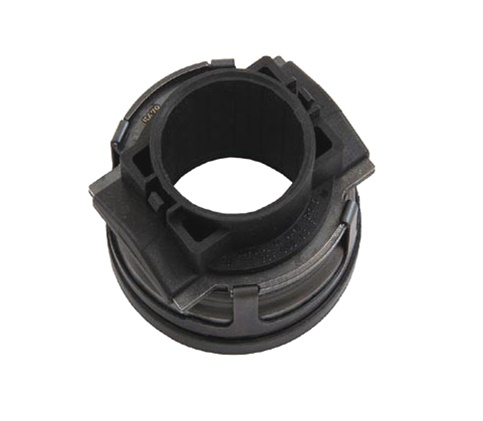
Pro Tip
If it turns out to be the clutch throw out bearing, then it is a good time to also change the clutch since you will be in the transmission anyway.
Catalytic Converters
When catalytic converters fail the catalyst inside sometimes breaks up into little chunks or pieces. Since the outer can of the converter is made up of metal, you can only imagine what this can potentially sound like. Because of the exhaust pulses of the engine, it can almost sound like grinding or continuous rattling.
The easiest way to check it is to shut the engine off and tap on the catalytic converters with a rubber mallet. If they rattle when you do this, then you most likely have a failed converter. You should also have a check engine light on which should be the first indication, but if that light is burnt out, it's not going to do you any good.
It is best to catch this failure before the pieces can clog up the exhaust and keep the exhaust gases from escaping. This can potentially overheat engine components and cause a lot of damage.

IMS Bearing
On the early generation of the 997 from 2005-2009, it is possible to have IMS bearing issues just like on the 911 996. It's still unapparent how frequently and at what mileage these are most likely to occur, but they still do. It's also very difficult to tell what signs to look for before it goes, and the problem is that if there is already a noise, it is usually too late.
Some people have reported a ticking noise that got louder and louder, and others have reported what they described as grinding. Either way, the noise will be coming from the front of the engine closest to the transmission because that is where the placement of the IMS bearing is. So, if you here a noise coming from this area, it very well could be this bearing.
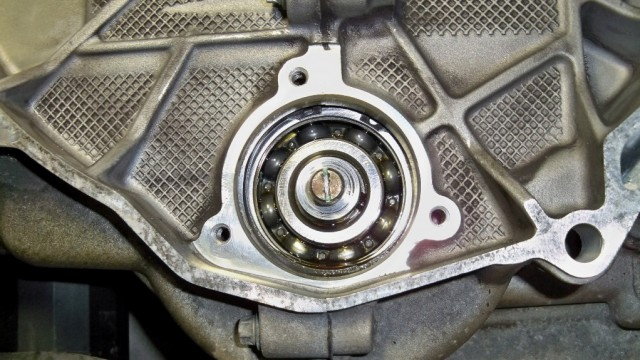
Related Discussions
- Strange Metallic Grinding Noise - Rennlist.com
- IMS Rattle of Death - Rennlist.com
- Grinding Noise Under Braking - Rennlist.com
- Grinding Noise Near Wheel - Rennlist.com


